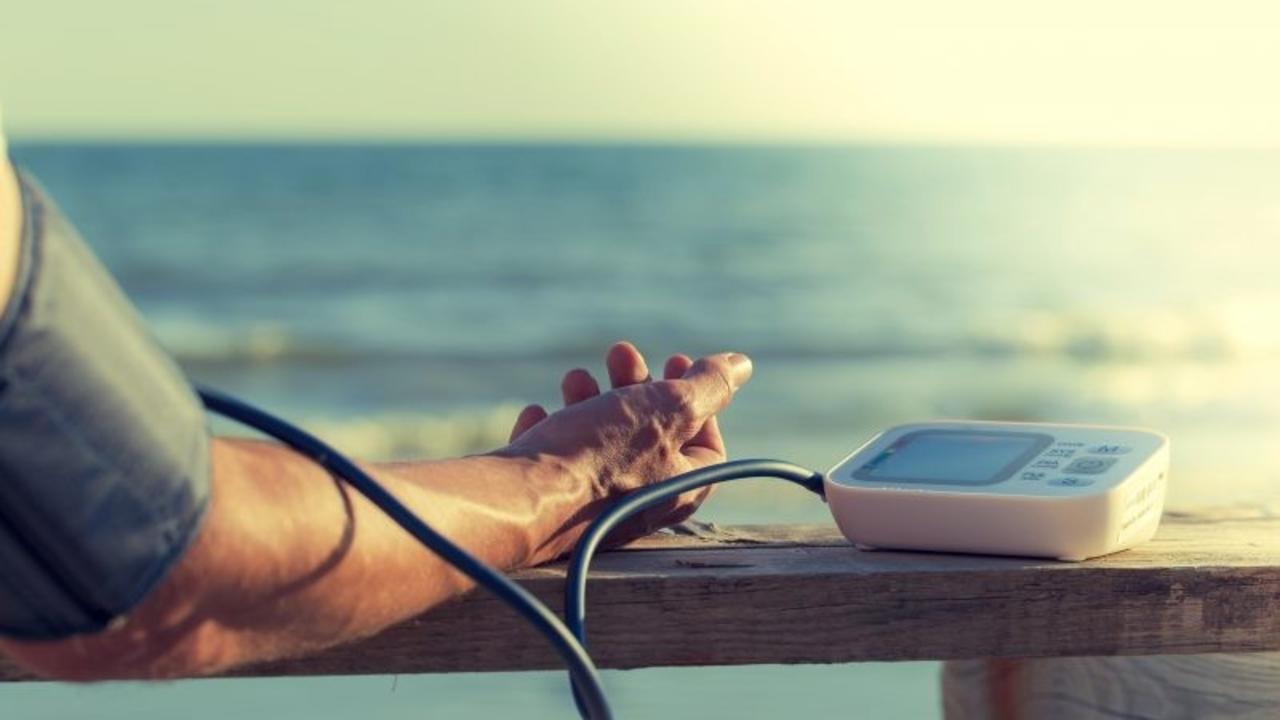Breathe Your Way to Better Blood Pressure

Stress levels seem like they’re at an all-time high these days…and, unfortunately, blood pressure is soaring right along with it.
In fact, the American Stroke Association and the American Heart Association estimate that more than 100 million Americans have high blood pressure—and, as a result, a significantly higher risk of stroke, heart attack, and premature death.
But here’s the good news: In most cases, high blood pressure is completely preventable—and reversible.
In fact, today I want to tell you about some brand new research—and a pill-free trick that could help you lower your blood pressure numbers naturally. More on that in just a minute.
First, let’s take a quick look at some of the symptoms of high blood pressure that you need to know about.
Nine symptoms you should never ignore
If you’re experiencing any of the following serious symptoms, please visit your doctor right away:
- Blood in the urine
- Chest pain
- Difficulty breathing
- Fatigue or confusion
- Irregular heartbeat
- Pounding in your chest, neck, or ears
- Severe headaches
- Swollen abdomen
- Vision problems
The longer you wait to treat high blood pressure, or hypertension, the more you put yourself at risk for serious—and potentially deadly—problems.
But don’t assume you’re in the clear if you don’t have any of the symptoms listed above.
According to the American Heart Association, most of the time, people with hypertension don’t experience any symptoms at all—which is why high blood pressure is known as the silent killer.
My rule for things like this is: When in doubt, go get checked out!
Why you should know your BP numbers and what they mean
For years, I never put much thought into the numbers the nurse would read off from the blood pressure cuff when I visited the doctor.
But if I’d known then what I know now about how dangerous high blood pressure can be, I would have paid a lot more attention.
To break it down, your blood pressure is recorded as two numbers:
- Systolic blood pressure (the first number) – refers to how much pressure your blood is exerting against your artery walls when the heartbeats.
- Diastolic blood pressure (the second number) – indicates how much pressure your blood is exerting against your artery walls while the heart is resting between beats.
In the chart below, the AHA offers a simple way to tell if your blood pressure reading falls in the healthy or unhealthy range.

Never miss another article. I'd be happy to send them on over to your inbox in my free e-newsletter— The Jim Donovan Digest.
Each week, I’ll bring you all the latest news—plus helpful tips on using sound, music, and rhythm for your health and well being. Receive you free subscription.
If your blood pressure is elevated, depending on the severity, your doctor may prescribe medication to get it under control.
But if you haven’t reached the “danger zone,” you may be able to rein things in without resorting to drugs. In fact, research shows you may be able to lower your blood pressure safely and naturally—in a matter of minutes…
Breathe your way to better blood pressure
Researchers from Florida Atlantic University just released an article touting the potential blood pressure benefits of a technique called mindful-paced breathing.
According to Dr. Suzanne LeBlang, M.D., a neuroradiologist, and associate professor in FAU’s Schmidt College of Medicine, “paced breathing stimulates the vagus nerve and parasympathetic nervous system, which reduce stress chemicals in the brain and increase vascular relaxation that may lead to lowering of blood pressure.”
The best part? Mindful paced breathing is easy to do. Here’s how:
- Find a comfortable, quiet place and take a moment to notice how you feel in your mind and body, as well as your mood.
- Slowly breathe in through the nose for five seconds, completely filling your abdomen and upper lungs.
- Purse your lips and slowly exhale for five seconds, making sure to push all the air out of your lungs.
- Repeat for three to five minutes or as long as it’s comfortable to do so.
Remember, it’s important to know your blood pressure numbers. If you’re not sure, it’s time to schedule a check-up with your doctor.
If it turns out your blood pressure is higher than it should be, I encourage you to give mindful-paced breathing a try. It’s a simple, safe, pill-free strategy that you can do anytime, anywhere.
So you’ve got nothing to lose—and less stress and a healthier heart to gain.
P.S. By the way, if you have high blood pressure and have successfully lowered it with any of the techniques I’ve shared with you, I’d love to hear from you! Drop me a line at [email protected]
Sources:
Mindfulness with paced breathing and lowering blood pressure https://www.sciencedaily.com/releases/2020/09/200909100214.htm
Mindfulness-based stress reduction helps lower blood pressure, study finds https://www.sciencedaily.com/releases/2013/10/131015094436.htm


